Ceredigion Gallantry Awards, The Great War, 1914-1918
During the course of the Great War, hundreds of men and women from the county of Ceredigion gained gallantry awards for various deeds of bravery and devotion to duty. Below are the people from the county who I have so far identified as having been recipients of a wide variety of these awards.
Lieutenant David Brynmor Anthony, MC & Bar, Royal Welsh Fusiliers. (Aberystwyth University). David was from Kidwelly. His award of the Military Cross was published in the London Gazette of 23 November 1917, and read: ‘For conspicuous gallantry and devotion to duty, leading his men forward under very heavy fire and inflicting heavy casualties on the enemy. Taking two men with him, he attacked a “pill-box,” killing two men himself and capturing a machine gun and three prisoners. He carried back a wounded Serjeant under heavy fire.’ David gained a second award of the Military Cross later in the war, after being promoted Captain. The citation which was gazetted on 13 September 1918, read: ‘For conspicuous gallantry and devotion to duty in directing and leading a raid. When seen by the enemy he at once gave word to charge, and led the way over the wire himself, killing two of the enemy. He did three daylight patrols, in two of which he fought and beat off ten or fifteen of the enemy, and gained the necessary information. He has shown the greatest courage and skill.’ He was also awarded the Italian Medal for Military Valour.
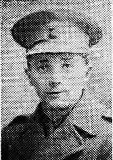
Thomas John Benjamin, MC, Second Lieutenant, Gloucester Regiment. (Ysbytty Ystwyth). Thomas served with the 12th Battalion, Gloucester Regiment. He was awarded the Military Cross during the last months of the war, during the advance to victory. His citation was published in the London Gazette of 11 January 1919, and read: ‘He led his platoon with the greatest dash and personally rushed a machine gun, killing two gunners, and then turned the gun on the fleeing enemy. Subsequently, by pushing his platoon forward under heavy fire, he captured three enemy field guns. He showed splendid courage and leadership.’
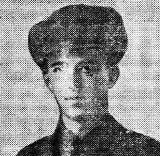
Leonard James Edward Biddulph, MM, Private, 1691, London Regiment. (Aberystwyth). Leonard served with the 1st Battalion, London Regiment. His award of the Military Medal was published in the London Gazette of 6 January 1917, and was for bravery in the field during the Somme offensive.
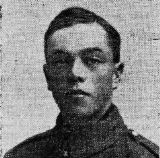
John Edward Burbeck, DCM, Sergeant, 452267, Royal Engineers. (Aberystwyth). John was awarded the Distinguished Conduct Medal for gallantry in Palestine. His citation was published in the London Gazette of 21 October 1918, and read: ‘For conspicuous gallantry and devotion to duty. When in charge, during operations, of the Brigade forward party, details to lay cable and establish an advanced report centre in the vicinity of the attacking troops, he carried out the work in face of many difficulties, and under heavy shrapnel and rifle fire, with the greatest courage and coolness, and it was principally due to his initiative and devotion that communication was maintained with the most advanced troops.’
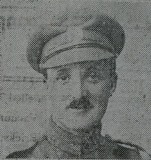
Thomas George Deane Burdett, MC, Captain, Royal Welsh Fusiliers. (Aberystwyth University). Thomas was the Son of George Deane and Claudia H. Deane Burdett, of Aberystwyth, and served with the 1/7th Battalion, Royal Welsh Fusiliers. He was awarded the Military Cross for Palestine. The award was published in the New Years Honours List which was published in the London Gazette of 1 January 1918. Thomas was later killed in action in Palestine, and is buried at Beersheba War Cemetery, Israel.
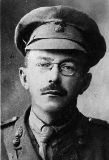
William Alexander Burn, MC, Captain, South Wales Borderers. (Aberystwyth University). William was from Swansea. His award of the Military Cross was published in the New Years Honours List of 1 June 1917. There was no citation.
David Brynmor Chiles-Evans, DSO, M.R.C.S., L.R.C.P., Lieutenant-Colonel, Royal Army Medical Corps. (Aberystwyth University). David was from Burry Port, Carmarthenshire. He was awarded the Distinguished Service Order in the King’s Birthday Honours list , which was published in the London Gazette of 3 June 1916. He was killed on 23 April, 1917, and is buried at Bethune Town Cemetery, France.
William Herbert Clarke, DCM, Bombardier, 37319, Royal Field Artillery. (Aberystwyth). William was posthumously awarded the Distinguished Conduct Medal in the New Years Honours List of 12 December 1917, for service with the 82nd Battery, Royal Field Artillery. There was no citation for the award. He died in Mesopotamia on 12 August 1916, and is buried at Baghdad (North Gate) War Cemetery.
Charles Pritchard Clayton, MC, MID, Captain, Welsh Regiment. (Aberystwyth University). Charles was from Garthmwyl, and served with the 2nd Battalion, Welsh Regiment. His award of the Military Cross was published in the London Gazette of 22 September 1916, and read: ‘For conspicuous gallantry in action. He displayed great coolness during a bombing attack, and commanded his company with marked ability. He set a fine example.’ He was also Mentioned in Despatches twice, on 25 May 1917, and on 14 December 1917.
Cecil Knight Coutts, MC, Lieutenant (Acting Captain), Royal Field Artillery. (Aberystwyth University). Cecil was from Edinburgh, and served with 27 Battery, 32nd Brigade, Royal Field Artillery, which was attached to the 4th Division. His award of the Military cross was published in the London Gazette of 15 June 1917, and read: ‘For conspicuous gallantry and devotion to duty. While commanding his battery, he displayed the utmost gallantry and coolness in removing shells from a dump which had caught fire. He organised and superintended the rescue of buried men, and by his courage and determination under heavy shell fire greatly diminished the loss in personnel and material.’
John Cuff, MM, MSM, MID, Sergeant, 225571, Monmouthshire Regiment. (Llangynllo). John was obviously a brave man, having just turned eighteen when he landed in France with the 1st Battalion, Monmouthshire Regiment on 13 February 1915. He gained three gallantry awards during the war, being Mentioned in Despatches in the London Gazette of 24 December 1917; awarded the Meritorious Service Medal in the London Gazette of 17 June 1918 for ‘valuable services in France during the present war’; and was awarded the Military Medal in the London Gazette of 13 September 1918, ‘for gallantry on 17/5/18 at Bethune’. John returned home a hero after the war, and was given a civic reception, in which he was presented with £1 note and a cigarette case by Lady Lloyd of Bronwydd. His medals were sold in 2011 for £1,250.
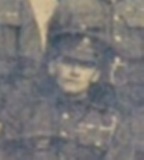
Edward Thomas Cutler, MC, MID, Regimental Sergeant Major, 1931, Scots Guards. (Tregaron). Edward was a career soldier, and had married Mary George, of Tregaron in 1903, while she was working in London. He served throughout the war with the 1st Battalion, Scots Guards, being awarded the Military Cross for distinguished service in the field, in the London Gazette of 14 January 1916. Edward was also Mentioned in Despatches in the London Gazette of 4 July 1919.
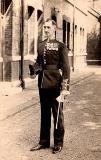
Walter Dagger, MM, Private, 48130, Welsh Regiment. (Cardigan). Walter served with the 17th Battalion, Welsh Regiment. His award of the Military Medal was gazetted on 14 September 1917. A note in the Battalion War Diary stated: ‘For gallant conduct and devotion to duty during an enemy gas shell bombardment on night 24/25th July 1917. These four S. Bearers showed great courage and initiative in entering the gas-shelled area, in carrying away the wounded and in adjusting respirators.’
Edward Dakin, MC, MID, 4649, Sergeant Major, Royal Lancaster regiment. (Aberystwyth University). Edward was from Llanidloes, and served with the 1st Battalion, Royal Lancaster Regiment. He was Mentioned in Despatches on 20 October 1914. He then went on to be among the first men ever to have been awarded the Military Cross, the award of which was published in the London Gazette of 1 January 1915. He was later commissioned.
Neville Reay Daniell, DSO, Lieutenant-Colonel, Duke Of Cornwall’s Light Infantry. (Crosswood). Neville was Commanding the 9th Battalion, Duke of Cornwall’s Light Infantry when he was awarded the Distinguished Service Order. The award was published in the New Years Honours List of 1 January 1918, and there was no citation. Neville had already died by the time the award was gazetted, after having been killed at Ypres on 4 October 1917. He is commemorated on the Tyne Cot Memorial.
Albert Gordon Davies, MC, Second Lieutenant, Royal Welsh Fusiliers. (Aberaeron). Albert was commissioned into the 7th Battalion (Merioneth & Montgomery), Royal Welsh Fusiliers in November 1916. His award of the Military Cross was published in the London Gazette of 27 August 1917, and read: ‘For conspicuous gallantry and devotion to duty. During an attack in complete darkness, he pushed through our own barrage to the enemy line in order to restore the direction which his platoon had lost, afterwards leading them to their objective. He displayed magnificent gallantry throughout.’ Albert had been seriously wounded during the action, and died in hospital on 1 August 1917. He is buried at Bailleul Communal Cemetery Extension, France.
Charlotte Davies, Nurse, Voluntary Aid Detachment. (Pistyllgwyn, Silian). Charlotte was awarded the coveted Royal Red Cross Medal, 2nd Class, for her services to nursing at the 3rd Western General Hospital during the war, and was invested with the award at Buckingham Palace. The award was published in the London Gazette of 23 October 1917. She later married David Ceredig Lewis, but sadly died at a Nursing Home at Cardiff on 23 October 1923. Her brother David was awarded the MM.

David Mark Davies, MM, Corporal, 30231, East Lancashire Regiment. (Lampeter). David was possibly born in Lampeter in 1882. He served with the 2nd/5th Battalion, East Lancashire Regiment, which was attached to 198 Brigade, 66th (2nd East Lancs) Division. His award of the Military Medal was posted in the London Gazette of 14 January 1918 and was most likely: ‘For gallantry during the severe action that took place on the Passchendaele Ridge in Belgium, on 9 October 1917’. He survived the war and his medals are now held in the collection of the Lancashire Infantry Regiments Museum at Fulwood Barracks, Preston.
Daniel John Davies, MC, Lieutenant, Welsh Regiment. (Aberystwyth). Daniel had originally served with the Pembroke Yeomanry, and then with the 24th Battalion, Welsh Regiment. He was awarded the Military Cross for his gallantry in France during 1918. His citation was published in the London Gazette of 29 July 1919, and read: ‘For conspicuous gallantry and devotion to duty in bringing up rations and ammunition under ‘heavy shell and machine-gun fire when transport officer. Though wounded, he remained at duty and never failed under any circumstances to bring his transport up to the front line. His calmness under shell fire and quiet and confident bearing were an example to all.’
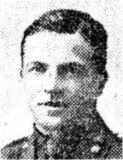
Daniel Meurig Davies, MM, Private, 91673, Durham Light Infantry. (Felinfach). Daniel served with the 15th Battalion, Durham Light Infantry. His award of the Military Medal was published in the London Gazette of 18 October 1918. Sadly he had been killed in action just weeks earlier, on 6 October 1918, and is buried at Fins New British Cemetery, Sorel-Le-Grand, France.
David Davies, MSM, Serjeant, 17128, South Wales Borderers. (Llanilar). David served with the 6th Battalion, South Wales Borderers. The award of his Meritorious Service Medal was published in the London Gazette of 17 June 1918.
David Davies, MM, Private, 37567, Welsh Regiment. (Pistyllgwyn, Silian). David served with one of the Welsh regiment battalions of the 38th (Welsh) Division. His award of the Military Medal was for leading a platoon at Pilckem Ridge, and was published in the London Gazette of 28 September 1917. His sister, Charlotte, was awarded the Royal Red Cross Medal.
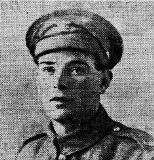
David Davies, MM, Private, 33343, South Wales Borderers. (Devil’s Bridge). David served with the 1st Battalion, South Wales Borderers. The award of his Military Medal was published in the London Gazette of 13 June 1919.
David Bailey Davies, Lieutenant, 1/13th Battalion, London Regiment. (Lampeter). David was a famous rugby player, who had been educated at Lampeter College and at Oxford, gaining his Oxford Blues, before playing for London Welsh, Llanelli and Wales. He was commissioned into the 1/13th Battalion, London Regiment during 1917, and was awarded the Military Cross for leading a trench raid on 1 June 1918 which led to the capture of 27 Germans and two machine-guns.
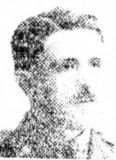
David John Davies, MC, Second Lieutenant, Royal Welsh Fusiliers. (Aberystwyth). David served with the 9th Battalion, Royal Welsh Fusiliers. His award of the Military cross was published in the London Gazette of 13 September 1918, and read: ‘For conspicuous gallantry and devotion to duty. By his personal example, and by the excellent fine control which he maintained, he kept his front intact against repeated enemy attacks. At night he went out on patrol on three occasions, capturing a prisoner and killing a machine-gun crew and bringing in the gun.’
Epworth Wynne Davies, Gunner, 112903, Royal Garrison Artillery. (Aberystwyth). Epworth’s award of the Military Medal was published in the London Gazette of 13 September 1918, and was for gallantry during the opening day of the German offensive, on 21 March 1918.
George Henry Davies, DCM, Sergeant, 52064, Cheshire Regiment. (Aberystwyth). George served with the 13th Battalion, Cheshire Regiment. The citation for the award of his Distinguished Conduct Medal cannot presently be traced. George was killed in action on 21 June 1917, and is commemorated on the Ypres (Menin Gate) Memorial, Belgium.
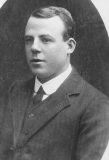
Geraint Davies, MC, Captain, Northumberland Fusiliers. (Aberystwyth). Geraint served with the 4th Battalion, Northumberland Fusiliers. His award of the Military Cross cannot presently be traced. Geraint was killed in action on 14 April 1918, and is buried at Locre Hospice Cemetery, Belgium.
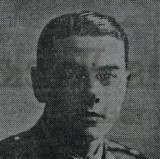
Gwylon Davies, MC, Second Lieutenant, Northumberland Fusiliers. (Llanon). Gwylon’s award of the Military cross was published in the London Gazette of 13 September 1918, and read: ‘For conspicuous gallantry and devotion to duty. During a withdrawal this officer volunteered to go forward and locate the enemy position, returning with valuable information. Some days later he showed great coolness under heavy fire, encouraging his men and leading a counter attack with great dash. He held on till forced to withdraw for want of ammunition.’
Jeremiah Jones Davies, MM, Private, 22732 (20936), Welsh Regiment. (Llanddewi Brefi). Jeremiah served with the 15th Battalion, Welsh Regiment, which was known as the Carmarthen Pals. The award of his Military Medal was published in the London Gazette of 16 November 1916, and was for his bravery at Mametz Wood in July 1916. Jeremiah survived the war, and was discharged on 15 January 1919.
Thomas Davies, MC, MID, 5890, Regimental Serjeant Major, Royal Welsh Fusiliers. (Aberystwyth University). Thomas was from Llanwrda. He was Mentioned in Despatches on 31 December 1915, and was also awarded the Military Cross, which was published in the London Gazette of 11 January 1916, and was: ‘For Distinguished Service in the Field’.
Thomas James Davies, Lance Corporal, 169515, Royal Engineers. (aberystwyth University). Thomas was from Brynhawen Henllan. His award of the Military Medal was published in the London Gazette of 22 February 1918.
William Davies, MM, Private, 5540, Royal Welsh Fusiliers. (Llanwenog). William served with the 2nd Battalion, Royal Welsh Fusiliers. The date of his award of the Military Medal has not yet been traced, but William was killed at Festubert on 21 May 1917.
William Ll Davies, Second Lieutenant, Royal Garrison Artillery. (Aberystwyth University). William was from Minffordd, and was awarded the Military Cross at some time during the war.
William R Davies, MM, Private, 320384, Welsh Regiment. (Cardigan). William served with the 24th Battalion, Welsh Regiment. His award of the Military Medal was published in the London Gazette of 19 March 1918, and was for his bravery during the Third Battle of Gaza.
John Davis, MSM, Sergeant, 288874, Royal Engineers. (Aberystwyth). John had served with the Welsh Regiment, before transferring to the Royal Engineers. His award of the Meritorious Service Medal was published in the London Gazette of 16 October 1918.
John James Dawkins, Sergeant Major, 77, DCM, MC, Royal Warwickshire Regiment. (Aberystwyth). John was from Leamington Spa, and had married Florence Emmeline Corfield of Aberystwyth on 22 October 1917. The couple lived at 43, North Parade, Aberystwyth. He was awarded three gallantry awards during the war, gaining is commission in 1918, and becoming a Captain by the end of the war. He was awarded the Distinguished Conduct Medal twice, the first being gazetted on 23 June 1915: ‘For conspicuous gallantry, on 18th December, 1914, at Rouges Bancs, where he on three occasions took messages under heavy fire. He also collected and brought in the wounded under difficult circumstances. The Bar to his DCM was gazetted on 1 April 1916: ‘For conspicuous gallantry when in charge of a small detachment. He became separated from any other troops on his flanks, and after several Battalions had fallen back he showed himself extremely capable, fearless and energetic in dealing with a highly critical situation. He was awarded the Military Cross in the New Years Honours List of 2 January 1918 and commissioned as Second Lieutenant. He died in 1933, aged 49.
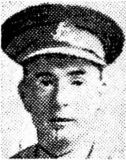
James Eric Dixon, MC, Lieutenant, South Staffordshire Regiment. (Aberystwyth University). James was from Stockport and served with the 8th Battalion, South Staffordshire Regiment. His award of the Military Cross was published in the London Gazette of 30 March 1916, and the citation read: ‘For conspicuous gallantry. When his trench had been very heavily shelled for two hours, and he heard that the enemy were advancing on his right, he went over the parapet and crawled forward, under heavy rifle fire, to see if they were preparing for an attack on his own trench. He was badly wounded.’ He later recovered and joined the Royal Flying Corps.
William Percy Dodd, MC, Second Lieutenant, Royal Welsh Fusiliers. (Aberystwyth University). William was from Wrexham. His award of the Military Cross was published in the London Gazette of 16 August 1917, and read: ‘For conspicuous gallantry and devotion to duty. He led his platoon with the greatest coolness and daring, inspiring all ranks with the utmost confidence by his fine leadership. He was wounded whilst leading his men forward in the final assault which captured the position.’
Charles Hotham Montagu Doughty-Wylie, VC, CB, CMG, Lieutenant-Colonel, Royal Welsh Fusiliers. (Bangor Teifi). Charles had been born in Suffolk, but resided at Bangor Teifi for much of his life, in between his long spells in the army as a career soldier. After graduating from Sandhurst in 1889 into the Royal Welch Fusiliers, Charles served in several campaigns, including the Chitral Expedition, the Occupation of Crete, the Mahdist War, the Second Boer War, the Boxer Rebellion, and Somaliland. Charles had been the British consul in Mersina, Turkey prior to the Great War, and was awarded the Order of the Medjidie by the Turkish Government, due to his work during the Balkan Wars. After the outbreak of the Great War, and the secret planning of the Gallipoli campaign, Charles was attached to General Sir Ian Hamilton’s headquarters staff of the Mediterranean Expeditionary Force. On 26 April 1915, following the landing at Cape Helles, Charles and another officer organized and made an attack on the village of Sedd-el-Bahr. Both were killed during the attack. Charles was posthumously awarded the Victoria Cross for his gallantry that day. The citation was published in the London Gazette of 23 June 1915, and read: ‘On 26th April 1915 subsequent to a landing having been effected on the beach at a point on the Gallipoli Peninsula, during which both Brigadier- General and Brigade Major had been killed, Lieutenant- Colonel Doughty-Wylie and Captain Walford organised and led an attack through and on both sides of the village of Sedd el Bahr on the Old Castle at the top of the hill inland. The enemy`s position was very strongly held and entrenched, and defended with concealed machine-guns and pom-poms. It was mainly due to the initiative, skill and great gallantry of these two officers that the attack was a complete success. Both were killed in the moment of victory.’ Charles is buried in an isolated grave at Seddel-Bahr.
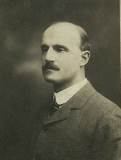
John Edwardes, MC, Lieutenant, Welsh Regiment. (Aberystwyth University). John was from Penuwch, Cardigan, and served with the 16th Battalion, Welsh regiment, 38th (Welsh) Division. His award of the Military Cross, for Mametz Wood, was published in the London Gazette of 22 September 1916, and read: ‘For conspicuous gallantry in action. He attacked three times a hostile machine-gun which was causing severe casualties. Finally with a few men he captured it, and killed the gun team. He was wounded later in the day.’
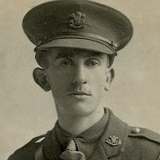
David Morris Edwards, Second Lieutenant, Royal Engineers. (Aberystwyth). David lived at 41, Portland Street, Aberystwyth. He was already serving with the Royal Engineers when he was commissioned on 19 September 1916. His award of the Military Cross was gazetted on 14 September 1917 and read: ‘For conspicuous gallantry and devotion to duty in commanding two subsections of trench mortars with untiring zeal and skill, and. complete indifference to danger, under an intense enemy bombardment. He continually reorganised and led his men, when severe casualties were occurring, and directed the fire of his guns with precision and coolness. His splendid example on this, as on many other occasions, mainly contributed towards the great success of the operations.’
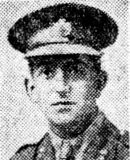
Edward Edwards, MM, Private, 345501, Royal Welsh Fusiliers. (Aberystwyth). Edward served with the 24th Battalion, Royal Welsh Fusiliers. His award of the Military Medal was published in the London Gazette of 22 July 1919.
Evan Edwards, DSM, Petty Officer, Royal Navy. (Aberystwyth). Evan was awarded the Distinguished Service Medal at some time during the war, but the award cannot presently be traced.
Griffith Oliver Edwards, MC, Second Lieutenant, Northumberland Fusiliers. (Aberystwyth University). Griffith was from Corris. He was commissioned from the OTC into the Northumberland Fusiliers on 5 September 1916. Griffith was posted to France, where he joined the 11th Battalion, Northumberland Fusiliers. The battalion had been in France since August 1915, was attached to 68 Brigade, 23rd Division. In May 1917 they took part in the Battle of Messines, before moving further north to Ypres, and took part in the Battle of the Menin Road. Griffith was badly wounded here on 20 September 1917, and was brought back to Ypres, dying that same day. He is buried at Ypres Reservoir Cemetery, Belgium. Griffith had been awarded the Military Cross just prior to his death, for his gallantry at Messines. The award was published in the London Gazette of 17 September 1917, and read: ‘For conspicuous gallantry and devotion to duty in commanding two platoons during an attack. His coolness and cheerfulness under heavy shell fire steadied his men, and later, when sent up to reinforce, he did so with great promptness and exactitude.’
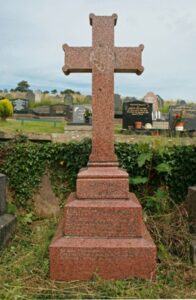
John Edwards, DSO, MID, Major, Royal Welsh Fusiliers. (Aberystwyth University). John was from Tregaron and served with the Royal Welsh Fusiliers, before being posted to command the 1st Battalion, Nots and Derby Regiment. He was Mentioned in Despatches on 22 May 1917, and was awarded the Distinguished Service Order on 7 March 1919. The citation read: During the operations from 3rd/9th October, 1918, which resulted in the capture of Oppy Village and the piercing of the Fresnes-Rouvroy line, he was in command of his battalion. By his gallant and determined leadership all objectives were successfully obtained and heavy casualties were inflicted on the enemy. Two officers, two warrant officers and sixty-six other ranks were taken prisoners, also ten machine guns and two minenwerfers. The battalion did fine work, and he set an example of energy to all ranks. John was Mentioned in Despatches again on 4 July 1919.
Griffith Daniel Ellis, MC, Captain, Royal Welsh Fusiliers. (Aberystwyth University). Griffith had served with the 16th Battalion, Royal Welsh Fusiliers, 38th (Welsh) Division, before being attached to the 23rd Battalion, Cheshire Regiment in 1918. His award of the Military Cross was published in the London Gazette of 11 January 1919, and read: ‘For conspicuous gallantry and resource in carrying out dangerous personal reconnaissances of machine-gun positions, with the result that, his unit were able to successfully cope with them. He has been conspicuous for his energy and initiative in action.’
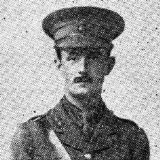
William Charles Escott, MM, Private, 242708, King’s Own Yorkshire Light Infantry. (Aberystwyth). William served with the 1/4th Battalion, King’s Own Yorkshire Light Infantry. His award of the Military Medal was published in the London Gazette of 26 August 1918. Sadly, William had been killed on 28 April 1918 during the German Offensive on the Lys.
Albert Pryse Evans, MM, Private, 78181, Royal Welsh Fusiliers. (Aberystwyth). Albert served with the 16th Battalion, Royal Welsh Fusiliers. His award of the Military Medal was published in the London Gazette of 13 June 1919. Albert had been killed on 4 November 1918 during heavy fighting at the Forest of Mormal.
David Hywel Evans, AM, Sub-Lieutenant, Royal Naval Volunteer Reserve. (Aberystwyth). David was based at Dover with the Royal Naval Volunteer Reserve, when a warship at anchor, HMS Glatton, caught fire. The ship was packed with explosive shells, and David was among a number of men to be awarded the Albert Medal for rescuing wounded sailors from the ship. His award was published in the London Gazette of 31 January 1919, and read: ‘On the 16th September, 1918, a serious explosion occurred Amidships on board H.M.S. “Glatton” whilst lying in Dover Harbour. This was followed immediately by an outbreak of fire, the oil fuel burning furiously and spreading fore and aft. Efforts were made to extinguish the fire by means of salvage tugs. The foremost magazines were flooded, but it was found impossible to get to the after magazine flooding positions. The explosion and fire cut off the after part of the ship, killing or seriously injuring all the officers who were on board with one exception. The ship might have blown up at any moment.’
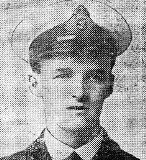
David J Evans, MM, Private, 38944, Welsh Regiment. (Aberystwyth). David served with the 2nd Battalion, Welsh Regiment. His award of the Military Medal was published in the London Gazette of 8 December 1916, and a contemporary newspaper report stated that: ‘In the advance near Zillebeke on 20th September 1917 he carried messages several times to the front line under murderous fire.’
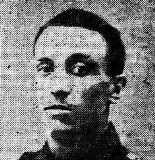
David Owen Evans, MID, Lieutenant, Royal Naval Reserve. (New Quay). David was a merchant mariner, who served with the Royal Naval Reserve aboard the steamship SS Norhilda. He was mentioned in despatches three times during the war, the first time on 17 June 1917: ‘For services in vessels of the Auxiliary Patrol between 1 Feb & 31 Dec 1916.’ The second, on 6 April 1918: ‘For services in connection with the war.’ The third, on 20 September 1918: ‘For services in connection with the war.’ He was also awarded the Romanian Chevalier of the Order of the Crown, which was published in the London Gazette of 17 March 1919.
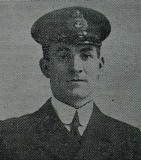
G. Evans, RRC, Matron, The Welsh Hospital, Netley. (Aberystwyth). Nurse Evans was awarded the Royal Red Cross 2nd Class in the London Gazette of 23 February 1917. She had served during the Boer War of 1899-1901.
Evan Evans, DSO, Lieutenant, Royal Naval Reserve. (Aberporth). Evan was a Captain in the Mercantile Marine. He was commissioned as a Lieutenant in the Royal Naval Reserve, and served aboard the steamship SS Kingsley. Evan’s award of the Distinguished Service Order was published in the London Gazette of 5 April 1918, the citation of which read: ‘In recognition of zeal and devotion to duty shown in carrying on the trade of the country during the war.’ An article in the Tivyside reported that the award was for gallantry while defending his ship against a U-Boat attack.
Evan Evans, MC, Captain, Royal Army Medical Corps. (Aberystwyth University). Evan was a Doctor at Lampeter prior to the war, and served with the Royal Army Medical Corps. His award of the Military Cross was published in the London Gazette of 1 January 1917. There is no citation, as it was a New Year’s Honours award.
Henry Richard Evans, MC, Second Lieutenant, Royal Lancaster Regiment. (Aberystwyth University). Henry was from Llandyssul. His award of the Military Cross, which was for Mesopotamia, was published in the London Gazette of 24 April 1917, and read: ‘For conspicuous gallantry and devotion to duty. He superintended the launching of pontoons under very heavy fire. It was chiefly due to his coolness and resource that a difficult task was accomplished.’
James John Pugh Evans, MC and Bar, MID, Lieutenant, 1st Battalion, Welsh Guards. (Llanbadarn). James was born at Aberystwyth on 14 May 1885, and lived at Pant-yr-Athro, Llangain. He was a well known officer within the Welsh Guards. His first award of the Military Cross was published in the London Gazette of 2 June 1916, but being a Birthday Honours award, there was no citation. His second award of the Military Cross was published in the London Gazette of 3 June 1918, and was another Birthday Honours award. James was also mentioned in despatches during the war. He was awarded the Member of the British Empire (MBE) during WW2, for his work with the Home Guard, and died in Kensington in 1974.
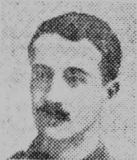
Joshua Evans, MM, Private, 241205, South Staffordshire Regiment. (Felinfach). Joshua served with the 2/6th (T.F.) Battalion, South Staffordshire Regiment. His award of the Military Medal was published in the London Gazette of 12 March 1918. Joshua had been killed just prior to this, on 21 March 1918, during the first day of the German Offensive.
Lewis Pugh Evans, VC, CB, CMG, DSO and Bar, Brigadier-General, Black Watch (Royal Highlanders). (Llanbadarn Fawr). Lewis was born at Abermadd on 3 January 1881, the son of Sir Gruffydd Humphrey Pugh Evans, KCB, and Lady Emilia Savi Pugh Evans. Lewis was educated at Eton, and at Sandhurst before joining the Black Watch, and served with them during the Boer War. Lewis obtained his Pilot’s Certificate prior to the war, and served with the Royal Flying Corps for several months, before rejoining the 1st Battalion, Black Watch as a Lieutenant. Lewis gained his first award of the Distinguished Service Order soon after. The citation, which was published in the London Gazette of 23 July 1915, read: ‘For conspicuous gallantry and devotion to duty on June 16th, 1915, at Hooge, when, after troops had become much mixed up, he continually moved up and down the firing line under heavy fire from 10 a.m. till mid-night reorganising units and bringing back their reports.’ Early in 1917, Lewis was appointed to command the 1st Battalion, Lincolnshire Regiment. Lewis was to gain the award of the Victoria Cross that year, whilst commanding the battalion at Polygon Wood. The award was published in the London Gazette, and read: ‘For most conspicuous bravery and leadership. Lt.-Col. Evans took his battalion in perfect order through a terrific enemy barrage, personally formed up all units, and led them to the assault. While a strong machine gun emplacement was causing casualties, and the troops were working round the flank, Lt.-Col. Evans rushed at it himself and by firing his revolver through the loophole forced the garrison to capitulate. After capturing the first objective he was severely wounded in the shoulder, but refused to be bandaged, and re-formed the troops, pointed out all future objectives, and again led his battalion forward. Again badly wounded, he nevertheless continued to command until the second objective was won, and, after consolidation, collapsed from loss of blood. As there were numerous casualties, he refused assistance, and by his own efforts ultimately reached the Dressing Station. His example of cool bravery stimulated in all ranks the highest valour and determination to win.’ Later in the war Lewis gained his second award of the Distinguished Service Order, the citation of which was published in the London Gazette of 16 September 1918, and read: ‘For conspicuous gallantry and devotion to duty in a three days’ battle. On the first day he was moving about everywhere in his forward area directing operations, the next day he personally conducted a reconnaissance for a counter-attack, which was carried out on the third day. It was largely due to his untiring energy and method that the enemy were checked and finally driven out of our forward system.’ He was also mentioned in despatches seven times and was also awarded the Order of Leopold (Belgium), and the Croix de Guerre (Belgium). He was made a Companion of the Order of St Michael and St George in 1919, and a Companion of the Order of the Bath in 1938, upon retirement. Lewis served again in WW2, as Military Liaison Officer at the Headquarters of the Wales Region.
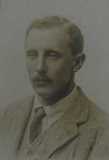
Richard William Picton Evans, MID, Major, Welsh Regiment. (Cardigan). Richard served with the 1/4th Battalion, Welsh Regiment. He was Mentioned in Despatches during the war, but was killed in Palestine on 13 September 1918.
Robert Owen Evans, MM, Sergeant, 57293, Welsh Regiment. (Llanbadarn Fawr). Robert was born in Llanbadarn on 9 July 1893, the son of Robert and Elizabeth Evans. He trained as a draper prior to the war, then moved to Warwick, where he married Elsie Couzens in 1915. Robert initially enlisted into the 7th Battalion, Royal Warwickshire Regiment, before transferring into the 13th Battalion, Welsh Regiment, which had been raised in the Rhondda as part of the 38th (Welsh) Division. His award of the Military Medal was for the divisions gallant assault on the Pilckem Ridge and was published in the London Gazette of 28 September 1917. Robert survived the war and died at Bradford on 16 October 1976, aged 83. His brother, William Abraham Evans, gained the award of the Military Cross during the war.
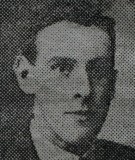
Thomas J Evans, MSM, Sergeant, 26804, South Wales Borderers. (New Quay). Thomas served with the 6th Battalion, South Wales Borderers. His award of the Meritorious Service Medal was published in the London Gazette of 17 January 1919.
William Abraham Evans, MC, Second Lieutenant, Royal Garrison Artillery. (Aberystwyth University). William was born at Llanfihangel y Creuddyn on 25 March 1889, the son of Robert and Elizabeth Evans. He was educated at Aberystwyth County School and then at Aberystwyth University before becoming a school teacher at St. Asaph. William had served with the Royal Army Medical Corps, before becoming commissioned into the Royal Garrison Artillery, and served with an anti-aircraft battery. The citation of his Military Cross was published in the London Gazette of 16 July 1918, and reads: ‘For conspicuous gallantry and devotion to duty. When in charge of a section, which was being subjected to heavy fire, he kept his guns in action until the hostile plane which he was engaging had been driven off. Later, when the ammunition had been set on fire, he went out, and with the aid of a Serjeant extinguished the fire by throwing snow and sacking on to it. By his cool behaviour he set an excellent’ example to all ranks.’ William survived the war, marrying Eunice May Davies, of Cardiff, whilst on leave in 1917. He later became a Physics Teacher and Headmaster at Denbigh Grammar School. He also served as a training officer with the RAF during WW2 and died at Denbigh on 17 May 1976, aged 87. His brother, Robert O. Evans, gained the award of the Military Medal during the war.
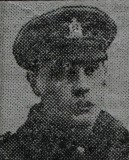
James Sheldon Eynon, MC, Captain, Welsh Regiment. (Aberystwyth University). James was from Burry Port, and served with the 11th Battalion, Welsh Regiment. The award of his Military cross was published in the London Gazette of 19 December 1916, and read: ‘For conspicuous gallantry in action. He rallied his party in the face of stubborn enemy resistance and carried the enemy trenches.’
George Fowler, MM, Bombardier, 73984, Royal Field Artillery. (New Quay). George served with D Battery, 235th Brigade, Royal Field Artillery. His award was listed in the London Gazette of 25 September 1917. He was killed in action during the German Offensive on the Somme on 27 March 1918, and is commemorated on the Arras Memorial.
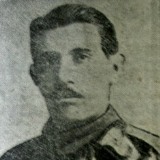
Roderick Beveridge McDonald Gardner, MM, Gunner, 159255, Royal Garrison Artillery. (Borth). Roderick served with the Royal Garrison Artillery. His award of the Military Medal was published in the London Gazette of 12 June 1918.
Albert Green, MC, Lieutenant, Welsh Regiment. (Aberystwyth University). Albert was from Blackwood, Monmouth, and served with the 10th Battalion, Welsh Regiment, 38th (Welsh) Division. His award of the Military Cross was for Mametz Wood, and was published in the London Gazette on 29 December 1916.
Thomas J Green, MM, Driver, 745725, Royal Field Artillery. (Goginan). Thomas was awarded his Military Medal for bravery at Vimy Ridge. The award was published in the London Gazette of 11 June 1918.
William Lionel Phillips Griffith-Jones, MC, Second Lieutenant, Durham Light Infantry. (Aberystwyth). William served with the 2nd Battalion, Durham Light Infantry. His award of the Military Cross was published in the London Gazette of 14 April 1916, and read: ‘For conspicuous gallantry. He took part in a raid on the enemy’s trenches, and was the first man to enter them. He shot the sentry and set a fine example of coolness.’ William died of wounds at Ypres on 12 July 1916.
David George Griffiths, MC, Lieutenant, Royal Field Artillery. (Llangranog). David served with the 84th Brigade, Royal Field Artillery, after having served for eight years with the Royal Navy. David’s award of the Military Cross was published in the London Gazette of 23 April 1918, and read: ‘ For conspicuous gallantry and devotion to duty when in charge of the battery while it was firing the final protective barrage. When the enemy shelled the position, exploding some ammunition and setting the camouflage of the gun-pit on fire he superintended the extinguishing of the fire and so saved the gun and ammunition. He did excellent work on several other occasions.’ David died at Llangranog as a result of injuries suffered during the war, on 17 December 1918.
Edward Griffiths, DSM, Signalman, 203882, Royal Navy. (Lampeter). Edward was serving with the Royal Navy during the evacuation of the troops from Gallipoli over the winter of 1915/16, and was awarded the Distinguished Service Medal for his efforts. The award was published in the London Gazette of 12 May 1916.
Lilian Rowlands Griffiths, MID, Nurse, Voluntary Aid Detachment. (Aberystwyth). Lilian was Mentioned in Despatches during the war.
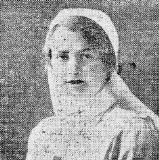
Thomas Griffiths, MM, Guardsman, 2759, Welsh Guards. (Blaenporth). Thomas served with the 1st Battalion, Welsh Guards. His award of the Military Medal was published in the London Gazette of 16 November 1917, and was for the Battle of Passchendaele. The citation was published in the Tivyside, and read: ‘On 3 September 1917 he was in an advanced post with a Lewis Gun section, when a shell obtained a direct hit on the post, killing three of the team and wounding the other. Private Griffiths, though severely wounded, remained at his post until relieved that night and showed great devotion to duty and setting a very fine example.’ Thomas was killed in action on 10 March 1918 at Gouzeaucourt.
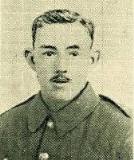
Alban Lewis Gwynne, CB, Commander, Royal Navy. (Aberaeron). Alban was born in 1881, the son of Alban Thomas Jones Gwynne and Mary Edith Gwynne (nee Harford), of Monachty, Cardiganshire. He married Ruby Bond in 1914, and served throughout the Great War with the Royal Navy. On 31 May 1918 he was appointed to the Most Honourable Order of the Bath. During the Second World War Alban was serving aboard HMS Southern Princess. Little can be traced about the ship, but Alban died on active service on 5 July 1942, aged 62, and was cremated at Golders Green Crematorium, England. Alban does not look to be commemorated locally, as he had sold the Monachty Estate prior to the war, and had moved to London.
Edward Rhys Harries, MC, Second Lieutenant, Welsh Regiment. (Aberystwyth). Edward served with the 10th Battalion, Welsh Regiment. His award of the Military Cross was published in the London Gazette of 24 July 1917, and read: ‘For conspicuous gallantry and devotion to duty when in charge of digging and wiring parties in No Man’s Land. His coolness and courage set a fine example to his men at a time when great presence of mind was required, and greatly assisted them in carrying out a dangerous operation.’
William Thomas Havard, MC, Chaplain Fourth Class, Royal Army Chaplain’s Department. (Aberystwyth University). William was from Brecon, and served with the Royal Army Chaplain’s Department. His award of the Military Cross was published in the New Year’s Honours List on 1 January 1918. There was no citation.
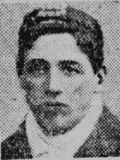
Arthur Frank Newman Henstock, MC, Captain, Notts & Derby (Aberystwyth University). Arthur served with the 15th Battalion, Sherwood Foresters. His award of the Military Cross was published in the New Year’s Honours List on 1 January 1918. There was no citation. Arthur was killed on 22 March 1918 during the German Spring Offensive.
Arthur Emlyn Hopkins, MC, Captain, East Lancashire Regiment. (Aberystwyth University). Arthur served with the 2/5th Battalion, East Lancashire Regiment. His award of the Military Cross was published in the London Gazette of 31 May 1918, in the King’s Birthday Honours List. There was no citation. Arthur was killed on the opening day of the German Spring Offensive, on 21 March 1918.
Alfred J Hughes, MM, Signaller, 138938, Royal Garrison Artillery. (Aberystwyth). Alfred served with the 280th Siege Battery, Royal Garrison Artillery. His award of the Military Medal was published in the London Gazette of 23 July 1919.
Mildred Lloyd Hughes, RRC and Bar, Head Sister, Royal Naval Hospital, Plymouth. (Lampeter). Mildred was awarded the Royal Red Cross 1st Class early in the war, and in the London Gazette of 6 May 1919 was the first, and thus far only, nurse there to be awarded a bar to the award: ‘the undermentioned ladies in recognition of their valuable services in connection with the war.’
Arthur Erskine Owen Humphreys-Owen, MC, Major, Royal Welsh Fusiliers. (Aberystwyth University). Arthur was from Garthmwyl, and served with the 1/7th Battalion, Royal Welsh Fusiliers. He was reportedly awarded the Military Cross during the war, but the award cannot presently be traced.
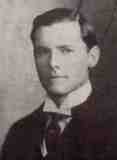
John Thomas Walters James, MC, Lieutenant, Machine Gun Corps. (Aberystwyth University). John was from Cwmtwrch. His award of the Military Cross was published in the London Gazette of 20 September 1918, and read: ‘For conspicuous gallantry and devotion to duty. During our advance this officer, though wounded, remained in command of his guns, which he disposed, on reaching the objective, with such skill that he was largely instrumental in breaking up the enemy’s counter-attack with very severe losses. A second counter-attack by the enemy forced a retirement on our infantry, which he covered with his fire, although obliged to take up positions exposed to the enemy’s fire, and he finally withdrew his own guns with much ability, saying a great number of casualties by the skill with which he conducted the operation. His coolness and gallantry under very heavy fire were most conspicuous during the whole action.’
Thomas David James, DCM, Private, 242476, Royal Welsh Fusiliers. (Aberystwyth). Thomas served with the 14th Battalion, Royal Welsh Fusiliers. His award of the Distinguished Conduct Medal was published in the London Gazette of 16 January 1919, and read: ‘For conspicuous gallantry and devotion to duty, at Gouzeaucourt, on September 18th 1919. When his company were consolidating under artillery and machine-gun fire, he went several hundred yards away to a flank, alternately firing his rifle and throwing bombs, and this effectively diverted the enemy fire from his company. He expended all his ammunition and bombs before returning, and by his initiative enabled the consolidation to be carried out with a minimum of casualties.
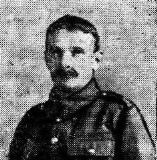
Benjamin David Jenkins, MM, Private, 31227, Royal Welsh Fusiliers. (Boncath). Benjamin served with the 1st Battalion, Royal Welsh Fusiliers. His award of the Military Medal was published in the London Gazette of 8 December 1916. Benjamin was killed on the Ancre on 27 February 1917.
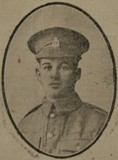
David Jenkins, MC, Lieutenant, South Wales Borderers. (Aberystwyth University). David was from Gwaun-cae-Gurwen, and served with the 6th Battalion, South Wales Borderers. His award of the Military cross was published in the London Gazette of 8 January 1918, and read: ‘For conspicuous gallantry and devotion to duty when in charge of a convoy of wagons which were bringing up material for road repairs. He showed great gallantry and judgment under a heavy gas shell bombardment, and his determination had such a moral effect that all the stores which were not already blown up were delivered at their destination in good time.’
David Isaac Jenkins, DSC, Captain, Mercantile Marine. (Llanon). David was originally from Aberarth, but lived with his wife at Llanon. He was a long serving mariner prior to the war, and was first awarded the Distinguished Service Cross. The citation for the award, which was published in the London Gazette of 27 November 1917, read: ‘The KING has been graciously pleased to approve of the award of the following honours, decorations and medals to the undermentioned officers and men of the British Mercantile Marine, in recognition of zeal and devotion to duty shown in carrying on the-trade of the country during the war.’ The details of the award are far more interesting, and were published in the Cambrian News after the war: ‘It has been previously reported how Captain Jenkins rescued 250 men and officers, as well as the chaplain and doctor, from the ill-fated transport Armadale, in the midst of great perils knowing that there were at least three enemy submarines quite near. He received his award at Buckingham Palace, and was also awarded the Lloyd’s Medal for saving life at sea.
Gwynfryn Jenkins, MC, Lieutenant, Machine Gun Corps. (Aberystwyth University). Gwynfryn was from Gowerton. His award of the Military cross was published in the London Gazette of 8 January 1918, and read: ‘For conspicuous gallantry and devotion to duty. He led his four guns to their objective with the infantry assault, and in spite of heavy casualties, placed them in good defensive positions and made complete arrangements for the-supply of ammunition, which had run short. He afterwards took charge of two more machine guns when their officer had been killed, and kept all six guns in action for three days in spite of continuous and severe shell fire, which reduced the teams to a minimum. But for his cheerfulness, gallantry and untiring efforts in going from gun to gun and encouraging the men, they could never have stood the strain.’
Lewis E. Jenkins, MM, Bombardier, 730438, Royal Field Artillery. (Taliesin). This man served with the Royal Field Artillery. The award of his Military Medal was published in the London Gazette of 15 March 1918.
Thomas Stephen Jenkins, Second Lieutenant, Royal Engineers. (Aberystwyth University). Thomas was from Bridgend. His award of the Military cross was published in the London Gazette of 23 April 1918, and read: For conspicuous gallantry and devotion to duty in preparing and successfully carrying out a projector gas attack under heavy shell fire. He did excellent work in two previous gas attacks.’
Arthur H Jones, MM, Sergeant, 57806, Welsh Regiment. (Aberystwyth). Arthur served with the 2nd Battalion, Welsh Regiment. His award of the Military Medal was published in the London Gazette of 11 February 1919.
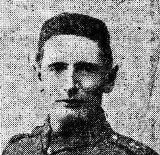
Daniel Evan Jones, MM, Private, 3015, Welsh Guards. (Llanbadarn Fawr). Daniel served with the 1st Battalion, Welsh Guards. His award of the Military Medal was published in the London Gazette of 14 May 1919. He had died of wounds at Beugny on 14 October 1918.
David A. Jones, DCM, MM and Bar, Sergeant, 19864, Welsh Regiment (Cardigan). David served with the 15th Battalion, Welsh Regiment, which was known as the Carmarthen Pals. He was one of their most decorated men, having been awarded the Distinguished Conduct Medal, and the Military Medal and Bar. The citation for his Distinguished Conduct Medal was published in the London Gazette of 3 October 1918, and read: ‘For conspicuous gallantry and devotion to duty during a preliminary reconnaissance. When an officer was severely wounded close to a hostile post, seeing that the patrol was in difficulties, he at once went to them, and carried the officer back himself, under heavy hostile rifle and machine-gun fire. His coolness and courage were most marked.’ The award of his first Military Medal had been gazetted on 3 June 1916, and his second award of the Military Medal had been gazetted on 9 July 1917, after a successful trench raid on the Morteldje Estaminet on 31 March 1917. David survived the war, and was discharged on 18 April 1919.
Dewi Idris Penry Jones, MSM, Corporal, SS/3895, Army Service Corps. (Lampeter). Dewi served with the Army Service Corps. The award of his Meritorious Service Medal was published in the London Gazette of 30 May 1919.
David James Jones, MM, Pioneer, 155374, Royal Engineers. (Aberystwyth University). David was from Bargoed. The award of his Military Medal was published in the London gazette of 25 September 1917.
David John Jones, DCM, Guardsman, 10475, Grenadier Guards (Ffairhos). David served with the 2nd Battalion, Grenadier Guards. His award of the Distinguished Conduct Medal was published in the London Gazette of 5 August 1915, but had no citation, apart from being for ‘conspicuous gallantry and devotion to duty’. A report in the Cambrian News stated that he had crawled into No Man’s Land after spotting a German team that was opening up poison gas cylinders, and killed the Germans, before turning off the gas. David was also mentioned in despatches, and awarded the Russian Cross of St. George.

David O. Jones, MM, Corporal, 27206, South Wales Borderers. (Aberaeron). David served with the 1st Battalion, South Wales Borderers. His award of the Military Medal was published in the London Gazette of 7 February 1919. A contemporary newspaper report stated: ‘He was in charge of a Lewis Gun post on the Somme front, and through his tact and devotion he prevented the annihilation of a platoon.’
David William Fenwick Jones, MID, Captain, Royal Army Medical Corps. (Aberaeron). David was mentioned in despatches by Sir Douglas Haig at some time in 1917. His sister Nancy was working as a Nurse at Bristol Military Hospital, and was awarded the Royal Red Cross at around the same time.
Edgar W Jones, OBE, Major, Royal Engineers. (Aberystwyth University). Edgar was from Llanrhaeadr-ym-Mochnant, and was awarded the Order of the British Empire at some time during the war.
Evan M Jones, MM, Private, 112335, Tank Corps. (Aberystwyth). Evan served during the war with the Tank Corps, and after the war volunteered to serve in North Russia. He was awarded the Military Medal for his services in the Baltic, which was published in the London Gazette of 3 February 1920.
Garland Issitt Jones, DCM, Sergeant, 29657, Royal Field Artillery. (Aberystwyth). Garland was born in Wanganui, New Zealand in 1892, his parents being from Aberystwyth. He served with the Royal Field Artillery during the war. His award of the Distinguished Conduct Medal was published in the London Gazette of 26 March 1918 and read: ‘For conspicuous gallantry and devotion to duty as serjeant-major. He organised spare men and details in a defensive line, shot one of the enemy at fifty yards’ range, went out and brought his rifle and ammunition and handed it to a man who had no rifle.’ He served with the New Zealand army during World War Two.
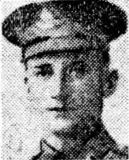
Griffith Lewis Jones, MC, Captain, Royal Army Medical Corps. (Aberporth). Griffith was awarded the Military cross during the war, but there was no citation, because it was published in the London Gazette of 31 May 1918, in the King’s Birthday Honours List. An article in the Tivyside stated that the award was: ‘for conspicuous gallantry and devotion to duty whilst in medical charge of the 2nd Devonshire Regiment in the Battle of the Somme in 1916 and the 2nd Scottish Rifles in the Battle of Ypres in 1917.’
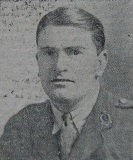
Harold Madoc Jones, MID, Lieutenant, Royal Welsh Fusiliers. (Cardigan). Harold served with the 17th Battalion, Royal Welsh Fusiliers. He was mentioned in despatches twice during the war, and was killed at Pilckem Ridge on 31 July 1917.
Henry Richard Jones, MC, Second Lieutenant, Welsh Regiment (Llanon). Henry served with the 14th Battalion, Welsh Regiment, but had been attached to the 7th Battalion, King’s Shropshire Light Infantry towards the end of the war. The citation for the award of his Military Cross was published in the London Gazette of 31 January 1919, and read: ‘At Flesquieres, 27th September, 1918, he led his company forward to the objective with great gallantry. When held up by a strong point in a copse he showed fine leadership and initiative, and by directing two platoons round either side he outflanked the enemy and put them to flight.’
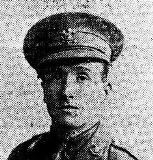
James Jones, MM, Private, 50092, Welsh Regiment. (Beulah). James served with the Welsh Regiment. His award of the Military Medal was published in the London Gazette of 7 October 1918.
John James Jones, DCM, MM, Sergeant, 64042, Machine Gun Corps. (Talybont). John is reported to have been awarded the Military Medal and the Distinguished Conduct Medal whilst serving with the 32nd Battalion, Machine Gun Corps. The citation for his Distinguished Conduct Medal was published in the London Gazette of 5 December 1918, and read: ‘For conspicuous gallantry and devotion to duty. This non-commissioned officer accompanied his officer in the first attacking wave, and, after selecting sites for two machine-guns, went back and brought them up into action in the face of heavy fire. He subsequently moved them forward, under intense machine-gun fire, and bringing neutralising fire to bear, enabled the infantry to advance and consolidate. His disregard for personal safety inspired all his men.’ The award of his Military Medal was published in the London Gazette of 14 May 1919.
John M. Jones, DCM, Lance Corporal, 29565, South Wales Borderers. (Aberystwyth). John served with the 2nd Battalion, South Wales Borderers. His award of the Distinguished Conduct Medal was published in the London Gazette of 10 January 1920, and read: ‘For conspicuous gallantry and determination at Outtersteene on 18th August 1918. When his platoon was held up by heavy machine—gun fire he, with another man, fired rifle grenades at the enemy, and, creeping forward, rushed the post, capturing two machine guns and killing three of the enemy and capturing five. Later he worked forward with the same man and captured an enemy sniper who was causing casualties during consolidation.’
John Rees Jones, MM, Serjeant Major, 22153, Royal Welsh Fusiliers. (Ponterwyd). John served with one of the battalions of the Royal Welsh Fusiliers in the 38th (Welsh) Division. The award of his Military Medal was published in the London Gazette of 18 August 1916. A report in the Cambrian News stated that the award was: ‘For conspicuous gallantry on several occasions, notably when, during a heavy bombardment, he moved about among the men and steadied them by his fine example.’
Nancy Jones, RRC, Sister, Bristol Military Hospital. (Aberaeron). Nancy was serving at the Military Hospital at Bristol when she was awarded the Royal Red Cross 2nd Class at sometime in 1917. Her brother, Dr. David William Fenwick Jones, served with the Royal Army Medical Corps in France, and was mentioned in despatches by Sir Douglas Haig at around the same time.
Thomas Idwal Jones, MM, Corporal, 2271, London Regiment. (Aberystwyth). Thomas was awarded the Military Medal whilst serving with the 15th Battalion, London regiment on the Somme, and the award was published in the London Gazette of 14 November 1916. He was later commissioned into the same regiment, and was killed later in the war. A newspaper report regarding his award stated that it was for: ‘Displaying great coolness and courage in handling his party on September 11th, when they raided the enemy’s trenches, and his example did much to ensure success.’
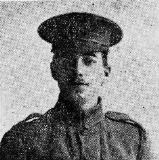
Walter Jones, MM, Sapper, 151794 (or 63003), Royal Engineers. (Aberystwyth University). Walter was from Felinfach, and was awarded the Military Medal at some time during the war.
W. J. Jones, MM, Sapper, Royal Garrison Artillery. (Taliesin). This man was reported in the Cambrian News as having been awarded the Military Medal for ‘sticking to his post during the last retreat.’ He cannot presently be identified.
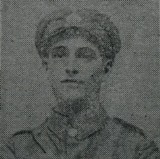
Thomas James Keane, MSM, Corporal, 6821, Royal Flying Corps. (Aberystwyth). Thomas served with the Royal Flying Corps. His award of the Meritorious Service Medal was published in the London Gazette of 28 December 1917.
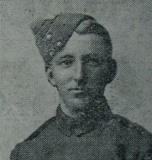
Francis Mansel Kitto, MC, Lieutenant, Royal Flying Corps. (Aberystwyth). Frank was a famous fighter ace during the Great War, who had transferred from the Welsh Regiment to the Royal Flying Corps. The citation for the award of his Military Cross was published in the London Gazette of 21 June 1918, and read: ‘For conspicuous gallantry and devotion to duty. While engaged in attacking ground targets with machine-gun fire and bombs he observed a large party of troops, amongst whom he dropped the remainder of his bombs with the most excellent results. On a later occasion he attacked a formation of enemy scouts, and having caused one of these to crash to the ground, he pursued another and attacked it eleven miles, behind the enemy’s lines, bringing it to the ground and destroying it. In addition to these he has shot down two other hostile machines, and has shown throughout, the greatest determination and dash.’
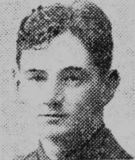
Thomas Landman, MC and Bar, Captain, Welsh Regiment. (Aberystwyth University). Thomas was educated at the University of Wales College, Aberystwyth, and after attending the Officer Training Corps was commissioned Second Lieutenant into the 15th Welsh (Carmarthen Pals). He was one of the battalions most gallant officers, being Mentioned in Despatches for a trench raid at Boesinghe, and gaining the Military Cross and Bar. His first award was published in the London Gazette of 26 May 1917, and read: ‘For conspicuous gallantry and devotion to duty when in command of a raiding party. Although severely wounded he continued to lead his men, and succeeded in carrying out the task allotted to him. He has previously done fine work.’ His second award was published in the London Gazette of 11 January 1919, and read: ‘For conspicuous gallantry and ability to command. On taking his company to the support of another battalion he found the latter withdrawing in some confusion. The night was very dark and the conditions most trying, as the men had been exposed to heavy shelling for some hours. Thanks to his cool courage and determination, however, the battalion, which had lost its commanding officer, was rallied and led back to its evacuated position, which he succeeded in holding against repeated enemy counterattacks.’
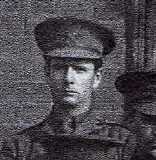
Arthur Ronald (Roy) Latch, DSO, Second Lieutenant, Tank Corps. (Borth). Roy served as a tank commander with the Tank Corps. The citation for his award of his Distinguished Service Order was published in the London Gazette of 16 July 1918, and read: ‘For conspicuous gallantry and devotion to duty. He took his tank into action and by his courage and determination saved an infantry battalion from a desperate situation. He drove the enemy from some strong points which were threatening the flank of the infantry. When darkness came on he was surrounded by the enemy, who climbed on to the top of his tank and seized hold of his machine guns, but with great presence of mind and courage he succeeded in driving them off and inflicted heavy casualties upon them. He then dispersed the enemy who were assembling for a counter-attack. He handled his tank in a most able manner under very difficult conditions, and the assistance which he rendered was of the greatest value.’
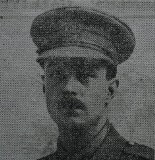
Frederick George Lesiter, MID, Captain, Royal Field Artillery. (Llanbadarn Fawr). Frederick was the husband of Margaret Jane Lesiter, of Rose Villa, Llanbadarn Fawr. He served with the 61st Division Ammunition Column, Royal Field Artillery and was mentioned in despatches during the war. The date of his gazette cannot presently be traced.
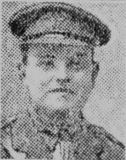
Charles George Lewes, CMG, DSO, Lieutenant Colonel, Essex Regiment. (Felinfach). Charles was born in 1869, the son of Colonel John Lewes and Mary Ann Lewes, of Llanlear, Felinfach. He had been commissioned into the Essex Regiment prior to 1900. Charles was given the command of the 9th Essex from 19 August 1914, and remained with the battalion until being wounded on the Somme on 2 July 1916. He was posted to the Staff after recovering, and during the war was awarded the Distinguished Service Order and C.M.G., as well as being Mentioned in Despatches several times.
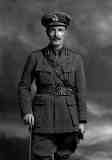
Price Vaughan Lewes, C.B., DSO, Captain, Royal Navy. (Felinfach). Price was born on 27 February 1865 at Llanlear, Felinfach, the son of Colonel John and Mary Ann Lewes. He enlisted into the Royal Navy at 13, serving aboard the training ship HMS Britannia, under Captain E. Kelly. On 23 July 1880, Price was posted to HMS Achilles, and just two months later, at the age of 15, he was promoted to Midshipman. During August 1893, Price had been promoted to Lieutenant, and was the third most senior officer aboard HMS Blanche, which was stationed at Zanzibar. He gained the award of the Distinguished Service Order for his gallantry here. By 1897, Price had gained command of the newly launched gunboat HMS Hazard, and took part in a Victoria Cross action at Crete. For his fine leadership in this affair on Crete, Price was promoted to Commander, by order of Her Majesty Queen Victoria. On 30 June 1905, Price was promoted to Captain in the Royal Navy, and afterwards took command of the Battleship HMS Superb, which was launched in 1909. During 1913 Price received the CB as part of the King’s Birthday Honours, to go with his Distinguished Service Order, and his Africa General Service Medal with Juba River Clasp. Price sadly became ill and suddenly died at the age of 49, on 10 November 1914.
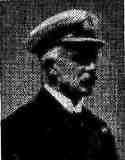
Evan Lewis, MM, Serjeant, 38, Welsh Guards. (Aberystwyth). Evan served with the 1st Battalion, Welsh Guards. His award of the Military Medal was published in the London Gazette of 14 May 1919.
Malcolm Meredith Lewis, Lieutenant, Royal Welsh Fusiliers. (Aberystwyth University). Malcolm was from Llanelli. His award was published in the New Years Honours List of 1 January 1917, and was ‘For Distinguished Service in the Field.’ He gained a second award later in the war, the citation of which was gazetted on 13 September 1918, and read: ‘For conspicuous gallantry and devotion to duty. When his battalion was ordered to withdraw, he, on his own initiative, formed his company into a rearguard, and under heavy machine-gun and high explosive barrage maintained his position for a considerable time. The initiative and gallantry he displayed undoubtedly enabled many others to withdraw in time, and were a magnificent example to the men under his command.’
Edward Llewellin, MID, Lieutenant, Royal Field Artillery. (Aberystwyth). Edward was from Abergavenny, and owned the Central Hotel at Aberystwyth. He was commissioned into the Royal Field Artillery. He was Mentioned in Despatches during the war, before resigning his commission in 1918 and returning to Aberystwyth. He later became the Mayor of Aberystwyth, and died in 1934, aged 70.
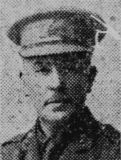
John Llewelyn, MM, Lance Bombardier, W/13, Royal Field Artillery. (Cardigan). John served with the 28th (Welsh) Divisional Artillery. His award of the Military Medal was published in the London Gazette of 12 November 1918.
Bertie Taylor Lloyd, MC, Lieutenant, Royal Field Artillery. (Aberystwyth). Bertie served with C Battery, 275th (West Lancs) Brigade, Royal Field Artillery. His award of the Military Cross was published in the New Year’s Honours List of 31 December 1918.
John Lloyd, Captain (Acting Major), Royal Garrison Artillery. (Aberystwyth University). John was from Ebbw Vale. His award was published in the London Gazette of 23 July 1918, and read: ‘For conspicuous gallantry and devotion to duty during a hostile attack, when, although the battalion was heavily shelled, he kept all his guns in action throughout the day and until ordered to withdraw. During the following day he maintained a steady fire on all targets ordered, until directed to withdraw at dusk, when the enemy machine-gun fire was very heavy on the battalion position. Throughout both days his courage and initiative were of a high order.’
John Cyril Hale Lloyd, MM, Gunner, 7/1026, New Zealand Artillery. (Llanilar). John had emigrated to New Zealand prior to the war, and enlisted there into the New Zealand Artillery. His Military Medal was awarded for bravery on the Somme, and was published in the London Gazette of 8 December 1916.
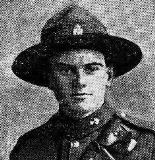
Oswald Octavius Lloyd, MM, Private, 764100, London Regiment. (Tregaron). Oswald served with the 28th Battalion, London Regiment (Artists Rifles). His award of the Military Medal was published in the London Gazette of 11 June 1918.
Edward Wynne Lloyd-Jones, MID, Captain, Royal Welsh Fusiliers. (Aberystwyth). Edward served with the 7th Battalion, Royal Welsh Fusiliers. He was Mentioned in Despatches on 28 January 1916, for Gallipoli. He was killed in action there on 10 August 1915.
Charles Alexander Holcombe Longcroft, K.C.B., C.M.G., DSO, A.F.C., Air Vice Marshal, Royal Air Force (Formerly Welsh Regiment). (Llanarth). Charles was born at Llanarth on 13 May 1883, the son of Charles Edward Longcroft, and Catherine Alicia Holcombe. Charles was educated at Charterhouse, and attended the Royal Military College Sandhurst, before being commissioned into the Welsh Regiment in 1903. He gained his pilots certificate on 5 March 1912, and became attached to the Royal Flying Corps. By 1914, Charles had been promoted to Major, Commanding 1 Squadron, RFC. During the course of the war Charles was promoted several times, ending the war as General Officer Commanding the 3rd Brigade. After the forming the Royal Air Force on 1 April 1918, Cecil resigned his commission in the Welsh Regiment on 1 August 1919, becoming a permanent Royal Air Force Officer. He became the first commandant of the RAF College at Cranwell, until retiring from the RAF on 2 November 1929. Charles was awarded a variety of decorations during his career, serving as a Gentleman Usher of the Scarlet Rod in the Order of the Bath, he was then appointed Registrar and Secretary of the Order of the Bath, and was knighted on 7 June 1938. Amongst his many decorations, Charles was made Companion of St. Michael and St. George, was awarded the Distinguished Service Order on 1 January 1918, the French Legion of Honour on 13 July 1917, the Order of St. Stanislaus, 3rd Class with Swords (Russia) on 25 August 1915, and the Air Force Cross on 1 January 1919. He was also Mentioned in Despatches several times. Charles died on 20 February 1958.
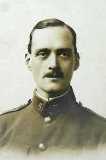
Margaret Anne Lyons, Staff Nurse, Queen Alexandrias Imperial Military Nursing Service. (Tregaron). Margaret, known as Peggy, had worked as a nurse in London for several years prior to the war. She volunteered to serve with Queen Alexandria’s Imperial Military Nursing Service, and saw service in Mesopotamia for several years during the war. She was awarded the Royal Red Cross 2nd Class in the King’s Birthday Honours List, which was published in the London Gazette of 2 June 1916.
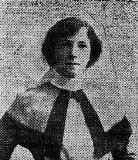
Arthur George Mann, MM, Sapper, 82417, Royal Engineers. (Cardigan). Arthur served with the 130th Field Company, Royal Engineers, 38th (Welsh) Division. His award of the Military Medal was published in the London Gazette of 22 July 1919.
Charles Samuel Mason, MC, Lieutenant, Royal Sussex Regiment. (Aberystwyth University). Charles was from Worthing. His award of the Military Cross was published in the London Gazette of 14 November 1916, and read: ‘For conspicuous gallantry as Scout Officer during operations. He has repeatedly carried out reconnaissances under heavy fire, and has displayed complete contempt of danger. His reports have been of the greatest use.’
Wentworth Megicks, MM, Private, 83044, Royal Army Medical Corps. (Lampeter). Wentworth served with the Royal Army Medical Corps. His award of the Military Medal was published in the London Gazette of 25 September 1917.
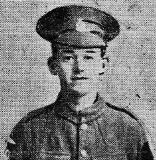
Frederick George Meyrick, MM, MID, Private, T/134823, Royal Army Service Corps.(Llanfarian). Frederick was the son of Francis and Mary Meyrick, of Selatyn, Shropshire. He was a Coachman, and was residing at Lampeter by 1911. Frederick served with distinction during the Great War, being awarded the Military Medal, and being Mentioned in Despatches twice, whilst serving with the Army Service Corps. Frederick married after being demobilised, and resided at Llanfarian with his wife, Margaret Anne Meyrick. He rejoined the colours at the outbreak of WW2, and served with the Royal Army Service Corps. Frederick died at Thanet, Kent on 31 December 1939, whilst on active service. He was 53 years old, and is buried at Bettws Bledrws (St. Bledrws) Churchyard.
Daniel Walter Morgan, MC, Lieutenant, Royal Welsh Fusiliers. (Devil’s Bridge). Daniel served with the 2nd Battalion, Royal Welsh Fusiliers. His award of the Military Cross was published in the London Gazette of 30 May 1916, and read: ‘For conspicuous gallantry and devotion to duty. He led a raid on the enemy’s trenches, and, although badly wounded in the hand at the outset, continued to lead his men with great pluck till he was a second time wounded on the enemy wire.’
Hugh Philip Morgan, MM, Lieutenant, Canadian Infantry. (Aberystwyth). Hugh served with the 31st Battalion (Alberta), Canadian Infantry. Hugh was awarded the Military Medal at some time, prior to being commissioned as an Officer. He was killed on 7 October 1918.
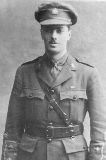
John Gilbert Morgan, MC, Captain, Royal Army Medical Corps. (Pontrhydygroes). John served with the Royal Army Medical Corps, and had been attached to the 1/5th Battalion, Royal Welsh Fusiliers. His award of the Military Cross was published in the London Gazette of 15 February 1918, and read: ‘For conspicuous gallantry and devotion to duty. When the advanced dressing station had been ordered to withdraw, he went forward with a number of bearers and successfully cleared a number of wounded men from the regimental aid posts. The operation was carried out under continuous shell and machine-gun fire.’
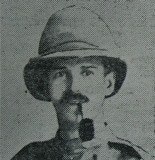
Ivor Prys Morris, CdeG, Captain, Royal Welsh Fusiliers (Aberystwyth University). Ivor was from Capel Bangor, and was originally commissioned into the 15th Battalion, Royal Welsh Fusiliers, 38th (Welsh) Division. He later transferred to the Royal Engineers, and was awarded both the French and Belgian versions of the Croix-de-Guerre.
Robert Nevill, MC. & Bar, Captain, South Lancashire Regiment. (Aberystwyth). Robert served with the 2nd Battalion, South Lancashire Regiment. His award of the Military Cross was published in the London Gazette of 11 December 1916, and read: ‘For conspicuous gallantry in action. He took command in the front line and handled his men, both in the attack and during the consolidation of the position, with great courage and ability.’ He was awarded the Military Cross a second time during the war, but was killed in action on 10 April 1918, and is commemorated on the Ploegsteert Memorial, Belgium.
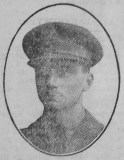
Charles Osborne-Jones, MC, Second Lieutenant, Royal Garrison Artillery. (Aberystwyth). Charles served with the Royal Garrison Artillery. His award of the Military Cross was published in the London Gazette of 16 October 1917, and read: ‘For conspicuous gallantry and devotion to duty. When his battery was being heavily shelled he saw a fire behind one of the guns, two boxes of ammunition being alight. Touching the burning boxes were three other boxes of ammunition badly scorched. In the pit close by there was a quantity of fused and unfused shells. He immediately proceeded with a gunner to put out the fire. The fused shell was too hot to handle when he arrived on the scene. His cool and courageous action undoubtedly saved the remainder of the ammunition.’
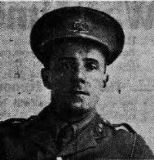
Andrew Geraint Joseph Owen, MC, Second Lieutenant, Welsh Regiment. (Lampeter College). Andrew was the son of the Bishop of St. David’s, John Owen, and his wife Amelia Mary Elizabeth Owen, of Abergwili Palace. He was commissioned into the 15th Battalion, Welsh Regiment (Carmarthen Pals). His award of the Military Cross was published in the London Gazette of 28 December 1917 and was for Distinguished Service in the Field.
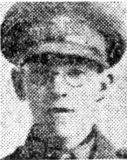
Goronwy Owen, DSO, Captain, Royal Welsh Fusiliers. (Aberystwyth University). Goronwy served with the 15th Battalion, Royal Welsh Fusiliers. His award of the Distinguished Service Order was published in the London Gazette of 30 May 1916, and read: ‘For conspicuous gallantry and determination in organising and leading a successful raid on the enemy’s trenches. Many of the enemy were accounted for, and Captain Owen covered the withdrawal with great skill under heavy fire. Although slightly wounded, he gave assistance to wounded men.’
John Frederick Owen, MM, Sergeant, 254351, Royal Engineers. (Aberystwyth). John served with the Signal Sub Section, Royal Engineers, and was attached to the 21st Brigade, RGA. He had been awarded the Military Medal at some time, prior to being killed in action on 11 August 1918.
William Henry Kenrick Owen, MID, Lieutenant, Welsh Regiment. (Aberystwyth). William served with the 9th Battalion, Welsh Regiment. He was Mentioned in Despatches whilst in charge of the Battalion Scouts, but was severely wounded at Loos, and died on 1 October 1915.
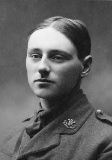
Owen Owens, MM and Bar, Private, Royal Welsh Fusiliers. (Llanllwchaiarn). Owen served with the 2nd Battalion, Royal Welsh Fusiliers, 38th (Welsh) Division, and was awarded the Military Medal twice for deeds of bravery during the final months of the war. His first award was published in the London Gazette of 7 February 1919, and the second on 13 June 1919.
Henry Howard Paine, MC, Captain, Royal Welsh Fusiliers. (Aberystwyth University). Henry was from Newport, Monmouth, and served with the 16th Battalion, Royal Welsh Fusiliers, 38th (Welsh) Division. His award of the Military Cross was for Pilckem Ridge, and was published in the London Gazette of 8 January 1918: ‘For conspicuous gallantry and devotion to duty when acting as second in command of his battalion. Under very heavy shell fire he reorganised the position of the companies, at great personal risk visiting all parts of the lino and making the position secure. Throughout the whole of this day, as on many other occasions, he displayed the utmost fearlessness and devotion to duty though continuously exposed to heavy shell fire.’
William Arthur Paine, MC, Captain, Royal Welsh Fusiliers. (Aberystwyth University). William served with the 16th Battalion, Royal Welsh Fusiliers, 38th (Welsh) Division. His award of the Military Cross was published in the London Gazette of 29 November 1918, and was for Delville Wood. The citation read: ‘For conspicuous gallantry during an attack. He advanced his company through heavy machine-gun fire until the line was held up all along and he was on an exposed flank. He maintained his position all day, and, although wounded, organised his defence with great skill and devotion to duty, and remained with his company until it was relieved and he was evacuated.’
David Phillip Parry, MM, Private, 54961, Royal Welsh Fusiliers. (Aberystwyth). David was serving with the 14th Battalion, Royal Welsh Fusiliers, 38th Welsh Division, when he won his Military Medal. Its award was published in the London Gazette of 18 July 1917. He was later killed.
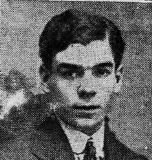
Ellis James Parry, DCM, Sergeant, 50022, Machine Gun Corps. (Cardigan). Ellis served with the 53rd Battalion, Machine Gun Corps, which was attached to the 53rd Division. His award of the Distinguished Conduct Medal was published in the London Gazette of 24 February 1920, and read: ‘He displayed great ability, coolness and determination during the attack on Akrabeih village on the 21st September, 1918. He rapidly brought his sub-section into action over very difficult country, and was thus able to give much needed support to the attacking infantry at a critical moment. It was entirely due to his personal initiative and example that such excellent support was forthcoming when most needed.’
Evan Parry, MM, Private, 18481, Welsh Regiment. (Silian). Evan served with the 15th Battalion, Welsh Regiment (Carmarthen Pals). His award of the Military Medal was for bravery at Pilckem Ridge in July-August 1917 and was published in the London Gazette of 28 September 1917. His medals were held at the Welsh Regiment Museum at Cardiff Castle, so are now presumably held at the Regimental Museum at Brecon.
Thomas Henry Parry, DSO, Major, Royal Welsh Fusiliers. (Aberystwyth University). Thomas was from Mold, and served with the 1/5th Battalion, Royal Welsh Fusiliers. His award of the Distinguished Service Order was published in the London Gazette of 16 August 1917, and read: ‘For conspicuous gallantry and devotion to duty. He showed great courage and skill whilst leading his company in an attack, and it was largely owing to his example that the attack made such good progress. Although twice wounded, he continued to command until put out of action by a third wound.’ The London Gazette of 26 November 1919 published his award of the Order of the Nile 4th Class.
Herbert Pateman, MSM, Sergeant, 200679, Yorkshire Regiment. (Llanbadarn). Herbert was the son of Robert and Elizabeth Pateman of Llanbadarn. He served with the 4th Battalion, Yorkshire Regiment, and was awarded the Meritorious Service Medal for valuable services with the forces in France. The award was gazetted on 17 June 1918.
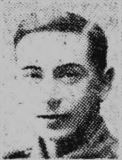
Stanley Peake, MSM, CQMS, T4/253615, Army Service Corps. (Aberystwyth). Stanley had served throughout the war with the Army Service Corps, and for his sterling work was awarded the Meritorious Service Medal, which was published in the London Gazette of 3 June 1919.
Joseph Mansell Perrott, Second Lieutenant, Royal Warwickshire Regiment. (Cardigan). Joseph was commissioned into the Royal Warwickshire Regiment from an OTC unit on 26 April 1917. He served in Italy and was awarded the Italian Silver Medal for Military Valour (Al Valore Militaire) by the Italian Government during the war. His family owned the Angel Hotel at Cardigan.
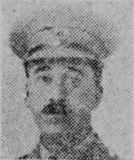
Cecil Phillips, MC and Bar, Lieutenant, Welsh Regiment. (Aberystwyth University). Cecil was from Llanelli, and served with the 1/4th Battalion, Welsh Regiment. His first award of the Military Cross was published in the London Gazette of 13 September 1915, and read: ‘For great gallantry in going out almost 70 yards under heavy shrapnel and rifle fire, and assisted by an N.C.O. bringing in a wounded officer to the covering of a trench, and again returning and bringing in 3 other wounded soldiers.’ The wounded officer was Captain Shenston of the Essex Regiment. This brave and selfless act also resulted in Cecil’s deed being written into the book ‘Deeds That Thrilled The Empire’. Cecil also gained a further award of the Military cross later in the war.
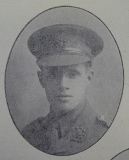
Henry William Phillips, MM, Private, 38151, Welsh Regiment. (Aberystwyth). Henry served with the 9th Battalion, Welsh Regiment. He was awarded the Military Medal at some time during the war, but was killed on the Somme on 7 July 1916.
Robert James Powell, MM, Sergeant, 266032, Monmouthshire Regiment. (Aberystwyth). Robert served with the 2nd Battalion, Monmouthshire Regiment. His award of the Military Medal was published in the London Gazette of 26 March 1917. Robert was killed in action at Ypres on 31 July 1917.
James Pugh, MID, Seaman, 3224/B, Royal Navy. (Aberystwyth). James served with the Royal Navy, at HMS Victory. He had been Mentioned in Despatches at some time during the war, and died on 12 October 1918.
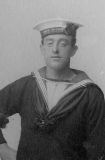
William John Pugh, OBE, MID, CdeG, Captain, Royal Welsh Fusiliers. (Aberystwyth University). William was from Westbury, and served with the 1/6th Battalion, Royal Welsh Fusiliers. He was Mentioned in Despatches twice, on 21 May 1918 and on 24 December 1918. He was then awarded the Order of the British Empire, which was published in the London Gazette of 1 January 1919, and on 17 June 1919 the London Gazette published the award of his French Croix-de-Guerre.
Robert Frank Purden, MM and Bar, Lance Corporal, 38846, Welsh Regiment. (Aberporth). Robert was from Shepherd’s Bush, but worked at Blaenporth prior to the war. He was awarded the Military Medal twice during the final year of the war whilst serving with the 9th Battalion, Welsh Regiment. The first award was published in the London Gazette of 29 August 1918, and the second in the London Gazette of 20 February 1919. An article in the Tivy Side reported on the award of his first Military Medal: ‘For good work during the operations from March 21st-24th and also at Beugny keeping a party of Germans at bay thus enabling the officers to get away.’
Frederick John Radford, MC, Second Lieutenant, Welsh Regiment. (Aberystwyth). Frederick served with the 15th Battalion, Welsh Regiment (Carmarthen Pals). His award of the Military Cross was published in the London Gazette of 13 September 1918, and read: ‘For conspicuous gallantry and devotion to duty. When the enemy attempted to break through his company front he was unceasing in encouraging and inspiring his men to resist all attacks. He untiringly walked across the front in the open, despite hostile machine-gun fire, and held on to his position until ordered to withdraw. Later, he carried out several reconnaissances.’
Robert Alexander Reddie, MBE, DSO, Captain, Norfolk Regiment. (Aberporth). Robert was attached to a battalion of the Essex Regiment in Egypt, and was awarded the Distinguished Service Order for the offensive into Palestine. The citation was published in the London Gazette of 3 October 1919, and read: ‘For conspicuous courage and skill during the attack of 19th September, 1918, at Kefr Kasin. Owing to heavy enemy shelling before daylight, the company became slightly disorganised, but Capt. Reddie by great skill and courage reorganised it and launched the attack at the detailed moment, gaining all objectives.’ He was awarded the M.B.E. in the London Gazette of 1 June 1923.
Robert David Rees, DCM, Private, 20943, Royal Welsh Fusiliers. (Aberystwyth University). Robert was from Neath, and served with the 9th Battalion, Royal Welsh Fusiliers. His award of the Distinguished Conduct Medal was published in the London Gazette of 10 January 1920, and read: ‘On the morning of the 13th September 1918, near the Bois de Biez, the enemy raided the posts of his platoon. He promptly took charge, visited all the posts, directing the men what to do. By his fine leadership the assault was repulsed. It was a splendid example of courage and initiative.’
John Hywel Richards, MC, Lieutenant, South Wales Borderers. (Aberystwyth University). John was from Carmarthen, and served with the 6th Battalion, South Wales Borderers. The award of his Military Cross was published in the London Gazette of 8 January 1918, and read: ‘For conspicuous gallantry and devotion to duty when in charge of a convoy. He went forward during a hostile counter-attack and reconnoitred the ground to find the best route for the animals through both the barrage and shell-holes, under heavy shell fire, through which he then led them without hesitation, sustaining only a few casualties. He successfully delivered the stores and ammunition which were urgently required. He has on several occasions shown remarkable initiative and great gallantry during similar journeys.’ John was killed during the Battle of the Lys on 19 April 1918.
William Richards, Second Lieutenant, Machine Gun Corps. (Aberystwyth University). William was from Pembroke. His award of the Military Cross was published in the London Gazette of 2 July 1918, and read: ‘For conspicuous gallantry and devotion to duty. Whilst in charge of four machine guns he suddenly found himself attacked in rear by large numbers of the enemy. Realising the situation, he moved his four guns and two guns of another section across the front of the enemy attack, and from a commanding position brought devastating fire to bear on the enemy at close range, which entirely held up their advance. With three additional guns he organised a defensive line, and having located two hostile machine guns, he put these out of action as soon as they opened fire, and also dispersed two other gun crews which were coming into action. Later, he took charge of another four guns, which he placed in defensive positions on the flank. He set a fine example of initiative, resource and courage during a critical period.’
William Thomas Roberts, MC, Captain, Devonshire Regiment. (Aberystwyth University). William was from Nantyglo, and served with the 4th Battalion, Devonshire Regiment. His award of the Military cross was published in the London Gazette of 23 August 1918, and read: ‘His Majesty the KING has been graciously pleased to approve of the undermentioned rewards for distinguished service in connection with Military Operations in Mesopotamia. Dated 3rd June, 1918’
Leigh Richmond Roose, MM, Lance Corporal, PS/10898, Royal Fusiliers. (Aberystwyth). Leigh had played football for Wales, and later for Aberystwyth F.C. prior to the war, and served with the 9th Battalion, Royal Fusiliers. He had been awarded the Military Medal during the war while fending off a German flammenwerfer attack at Thiepval, but was killed on the Somme on 7 October 1916.
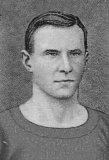
Edward David Rowlands, MM, Private, 2954, Welsh Guards. (Llanuwchllyn). Edward served with the 1st Battalion, Welsh Guards during the war, and was awarded his Military Medal for Pilckem Ridge. The award was published in the London Gazette of 25 September 1917.
Evan David Rowlands, MID, Lance Corporal, 19964, Royal Welsh Fusiliers. (Aberystwyth). Evan was born in 1889, the son of Evan and Anne Rowlands, of 13, Bridge Street, Aberystwyth. He enlisted in 1914 into the Welsh Regiment, but was transferred to the 16th Battalion Royal Welsh Fusiliers. He was Mentioned in Despatches for the attack on Pilckem Ridge on 31 July 1917. Evan became ill towards the latter stages of the war and died at Etaples on 31 October 1918, aged 29. He is buried at Etaples Military Cemetery, France.
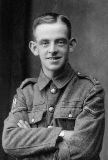
Rees Thomas Saunders, CdeG, Captain, Monmouthshire Regiment. (Aberystwyth University). Rees was from Pontlottyn. His award of the French Croix-de-Guerre was published in the London Gazette of 17 June 1919.
G. Schwartz, Sergeant, Zouave Regiment, French Army. (Aberystwyth). Schwartz was a Belgian, who after being exiled from his country lived for a while with his uncle at Aberystwyth. He served for the French Zouave Regiment during the war, and was awarded the French Croix-de-Guerre.
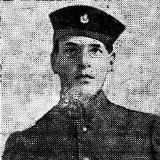
Samuel Charles Skuse, MC, Lieutenant, Royal Welsh Fusiliers. (Aberystwyth University). Samuel was from Crumlin, and served with the 16th Battalion, Royal Welsh Fusiliers, 38th (Welsh) Division. His award of the Military Cross was published in the London Gazette of 8 December 1916, and read: ‘For conspicuous gallantry in action. He led a raid on the enemy trenches with great courage and determination, and repelled an attack on his right flank. He set a splendid example to his men.’
Cecil Ernest Stephenson, MM, Sergeant, 730064, Royal Field Artillery. (Aberystwyth). Cecil served with A/255 Brigade, Royal Field Artillery during the war, and was awarded the Military Medal for bravery at Cambrai. The award was published in the London Gazette of 22 July 1919. A contemporary newspaper report stated that it was for: ‘At Iwvy, Cambrai, Sergeant Stephenson displayed great gallantry in taking command of a section of guns and taking them forward under an enemy barrage, thus clearing the way for the infantry, who were held up by Machine Gun Fire, and he was congratulated by his Divisional Commander.’

George Taylor, MM, MSM, Corporal, 38171, Welsh Regiment. (Lampeter). George served with the 9th Battalion, Welsh Regiment. The award of his Military Medal was published in the London Gazette of 3 June 1919, and the award of his Meritorious Service Medal was published in the London Gazette of 13 March 1919. George survived the war, and was discharged on 26 April 1919.
Joseph Thomas, DCM, MM, Sergeant, 3238, Royal Scots. (Llanbadarn Fawr). Joseph served with the 12th Battalion, Royal Scots. His award of the Distinguished Medal was published in the London Gazette of 11 March 1916, and read: ‘For conspicuous gallantry when leading his section in a bombing attack in face of heavy bomb and rifle fire. He set a splendid example by his own personal courage, and held on till the position was consolidated.’ Joseph was also awarded the Military Medal at some time during the war, but was killed in action on 12 April 1917 at Arras.
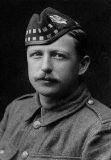
Sir Godfrey Vignoles Thomas, CB, CBE, DSO, MID, Brigadier-General, Royal Artillery (Hafod, Cardigan). Geoffrey had been a career soldier, having served during the Afghan War on 1878-79. After the outbreak of the Great War he raised and commanded the 24th Division Artillery. Godfrey had a variety of awards bestowed upon him during his long career, namely he was a Companion of the Order of the Bath (CB), Commander of the Order of the British Empire (CBE), a Member of the Distinguished Service Order (DSO), and had been Mentioned in Despatches several time. He had also been awarded the Order of Medjidie 4th Class, by Turkey. He died on 17 February 1919.
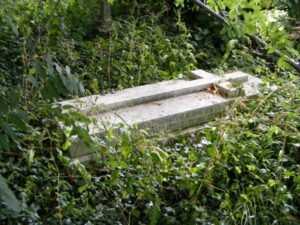
Rhys Thomas, DCM, Sergeant, 320160, Welsh Regiment. (Lampeter). Rhys served with the 24th Battalion, Welsh Regiment. His award of the Distinguished Conduct Medal was published in the London Gazette of 1 May 1918, and read: ‘For conspicuous gallantry and devotion to duty. He was on several occasions instrumental in establishing his portion of the line when driven back by superior numbers of the enemy, who were counterattacking. Burma the third counterattack, after his company commander had become a casualty, he led the line most gallantly, reorganised the defence of two companies, and held his ground, personally accounting for seven of the enemy with the bayonet. His gallantry and disregard of danger proved a fine incentive to the men.’
Stanley Ford Thomas, DSO, MID, Captain, King’s Shropshire Light Infantry. (Aberystwyth University). Stanley was from Wattlesborough, and served with the 6th Battalion, King’s Shropshire Light Infantry. He was Mentioned in Despatches on 15 June 1916, and was also awarded the Distinguished Service Order.
William Edgar Thomas, DSO, MC, Lieutenant-Colonel, East Yorkshire Regiment. (Cardigan). William was the Commander of the 7th Battalion, Border Regiment. His first award, the Military Cross, was awarded to him whilst serving as a Lieutenant with the Lincolnshire Regiment, the citation of which was published in the London Gazette of 9 January 1917, and read: ‘For conspicuous gallantry in action. He handled his company with great courage and initiative, repelling two enemy attacks. Later, he led-a counter charge against the enemy with great gallantry.’ He gained his award of the Distinguished Order whilst second in command of the 7th Battalion, Border Regiment, the citation, which was published in the London Gazette of 29 November 1918, read: ‘He commanded two companies in an outflanking movement to capture a village which was strongly held by the enemy. By his able dispositions and fearless leading he succeeded, with only two casualties, in taking four machine gums and fifty prisoners. The advance was then continued, .and the whole village finally captured. His fine example of courage and leadership inspired all ranks.’ William was seriously wounded at Amerval, and died there on 20 October 1918.
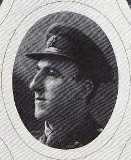
John David Vaughan, MC, Second Lieutenant, Welsh Regiment. (Aberystwyth University). John was from Burry Port, and served with the 14th Battalion (Swansea), Welsh Regiment. His award of the Military Cross was published in the London Gazette of 9 January 1917, and read: ‘For conspicuous gallantry in action. He carried out a daring reconnaissance with great courage and determination, obtaining most valuable information.’ He was later wounded at Ypres, and died of wounds on 18 March 1917. He is buried at Ferme-Olivier Cemetery, Belgium.
Philip Edmund Vaughan, DSO, Major, Worcestershire Regiment. (Felinfach). Philip served with the Worcestershire Regiment. He had served with the Worcestershire Regiment during the Boer War. During the Battle of the Somme, Philip was in command of the 8th Battalion, Green Howards, and was awarded the Distinguished Service Order for his bravery and leadership at Contalmaison. Philip died of wounds suffered during the Great War at home on 5 December 1918.
Thomas James White, MC, Lieutenant, Royal Field Artillery. (Aberystwyth). Thomas served with the 255th Brigade, Royal Field Artillery. His award of the Military Cross was published in the London Gazette of 15 March 1918, and read: ‘For conspicuous gallantry and devotion to duty. When the forward observation party was heavily shelled and sustained many casualties, he went forward, bound up the wounded and had them removed to safety. He then advanced with another party, still under heavy shell fire, and sent back valuable information.’ Thomas was killed at Cambrai on 20 November 1917.
Abel J. Williams, MM, Corporal, 16287, Royal Welsh Fusiliers. (Lampeter). Abel served with the Royal Welsh Fusiliers. His award of the Military Medal was published in the London Gazette of 23 February 1918.
David Cynddelw Williams, MC, Reverend, Royal Army Chaplain’s Department. (Aberystwyth). David was serving with the Army Chaplain’s Department, and had been attached to a battalion of the Royal Welsh Fusiliers. His award of the Military Cross was published in the London gazette of 29 January 1917, and read: ‘For conspicuous gallantry and devotion to duty. He accompanied the battalion to the front line, and performed most valuable service in the rescue and tending of the wounded under an intense fire. He has on many previous occasions done fine work.’
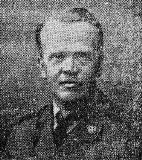
Moulsdale Williams, MC, Lieutenant, Royal Welsh Fusiliers. (Aberystwyth University). Moulsdale was from Wrexham, and served with the 2nd Battalion, Royal Welsh Fusiliers. He won his award of the Military Cross for his work when the Red Dragon Crater was blown beneath his battalions’ positions in 1916. His citation was published in the London Gazette of 27 July 1916, and read: ‘For conspicuous gallantry after the enemy had exploded a large mine. Regardless of the enemy’s fire he organised his sapping parties and carried out the consolidation work with great coolness. He has repeatedly done fine work after mine explosions.’
Richard Williams, MC, Captain, Royal Garrison Artillery. (Aberystwyth University). Richard was from Solva, and served with the 119th Heavy Battery, Royal Garrison Artillery. He was awarded the Military Cross at some time during the war.
William Williams, MM, Private, 12649, Grenadier Guards. (Borth). William had served with the 1st Battalion, Grenadier Guards since the first days of the war, and was awarded the Military Medal at some time in 1918.
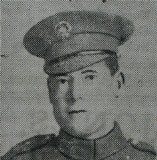
Charles Robert Wilson, MM, Private, 267569, Monmouthshire Regiment. (Cardiganshire). Charles served with the 2nd Battalion, Monmouthshire Regiment. His award of the Military Medal was published in the London Gazette of 27 July 1917.
Philip Mortlock Young, MID, Lieutenant, King’s Liverpool Regiment. (Aberystwyth University). Philip served with the 1st Battalion, King’s Liverpool Regiment. He was Mentioned in Despatches at some time during the war, and was killed in Action at Festubert on 10 March 1915.